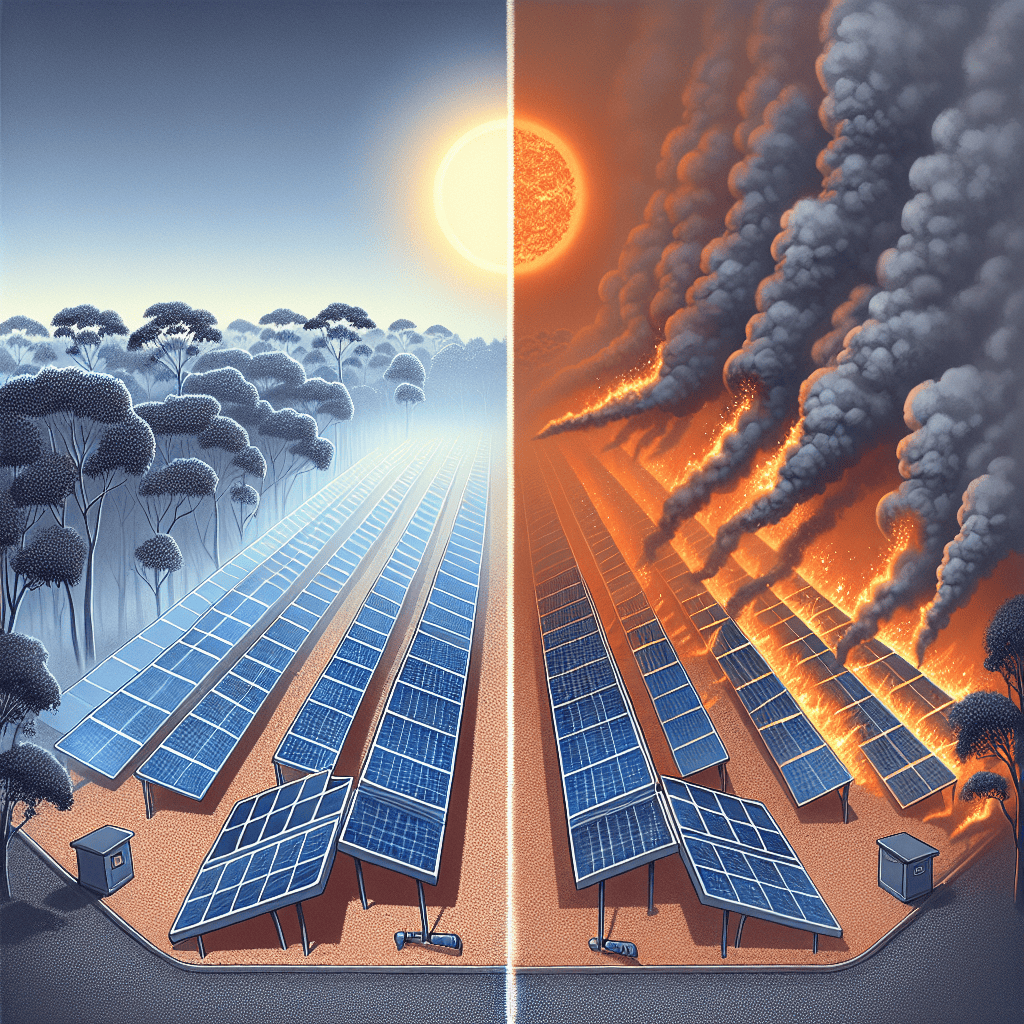Introduction
Natural disasters such as bushfires have profound and often unforeseen consequences that ripple through our environment, infrastructure, and daily lives. One critical area of impact, especially in regions like Australia where solar power plays a vital role in the renewable energy shift, is the effect of bushfire smoke on solar power efficiency and generation.
As solar panels depend on sunlight to generate electricity, the presence of smoke in the atmosphere can interfere with their performance. This blog delves into how bushfire smoke affects solar power efficiency, the science behind this phenomenon, and potential methods to mitigate the outcomes.
Understanding the Relationship Between Bushfire Smoke and Solar Power
The Science Behind Solar Panel Performance
Solar panels convert sunlight into electricity through photovoltaic (PV) cells. These cells rely on direct and diffuse sunlight for energy production. However, when smoke particles from bushfires blanket the atmosphere, they can disrupt this process in the following ways:
- Blocking of Sunlight: Thick smoke plumes reduce the amount of sunlight reaching the surface by scattering and absorbing solar radiation.
- Reduction in Air Quality: The presence of particulate matter in the air increases atmospheric haze, which diminishes light intensity.
- Impact on Diffuse Light: While some solar panels can utilize diffuse sunlight, a heavily polluted atmosphere can reduce even this form of usable light.
The outcome of these factors culminates in significant cuts to the energy generation potential of solar systems during bushfire seasons.
Studies Highlighting the Impact of Smoke
Recent research conducted by scientists delves into the measurable effects of bushfire smoke on solar energy output. For example:
- Decrease in Efficiency: Studies show that areas affected by bushfire smoke can experience a reduction of up to 50% in solar panel performance.
- Localized Power Drops: Regions closest to fire zones see the sharpest declines in power output due to thicker smoke and particulate density.
- Prolonged Impact: Even after the smoke clears, the deposited particulate matter on solar panels can continue to affect performance if not cleaned.
These findings underline the importance of understanding and mitigating the effect of smoke to maintain solar energy reliability.
Implications for Solar Power Generation and Grid Infrastructure
The Broader Effects on Renewable Energy Goals
Australia, and many other countries with similar climates, rely on solar energy generation as a key component of their renewable energy mix. However, disruptions caused by bushfire smoke can have a domino effect:
- Energy Supply Challenges: Reduced solar output places additional pressure on the grid, often requiring backup resources such as fossil fuels to compensate for the shortfall.
- Increased Costs: A loss in solar production may necessitate higher reliance on expensive energy imports or alternative generation methods.
- Hindrance to Sustainability Goals: Consistent interruptions to solar generation during bushfire seasons could slow down the transition to 100% clean energy targets.
Economic and Operational Challenges for Solar Operators
Solar farm operators, businesses, and homeowners with rooftop PV panels face significant hurdles during periods of bushfire smoke:
– Lower payback on investments in solar technology, as downtime during peak smoke coverage can diminish expected returns.
– The additional cleaning and maintenance costs to remove accumulated ash and soot on solar panels.
– The need for better forecasting and mitigation strategies to handle smoke impacts effectively.
How Can These Impacts Be Mitigated?
Advanced Monitoring and Forecasting
One of the critical components in addressing the bushfire smoke-solar power issue is the establishment of advanced monitoring systems. Temporary reductions in output may be inevitable, but having real-time data can help plan around smoke interruptions. This includes:
– Predictive models that incorporate smoke particle dispersal patterns to anticipate drop-offs in solar generation.
– Systems that track particulate matter and air quality in solar farm regions for proactive maintenance and cleaning schedules.
Self-Cleaning Coatings for Solar Panels
Innovative technologies in solar panel design are becoming increasingly relevant. One such technology includes **self-cleaning coatings**, which can help solar panels remain clear of ash and soot. These coatings minimize the need for manual cleaning and protect the panels from particulate build-up.
Energy Storage Solutions
During periods of reduced solar generation due to bushfire smoke, having robust energy storage solutions can help balance supply and demand. Lithium-ion battery systems or other centralized storage options can provide:
– Emergency backup during daylight production gaps.
– Energy supply stability when solar panels are operating below peak efficiency.
Increased Diversification of Renewable Energy
To reduce reliance on solar energy alone, diversification of renewables, such as wind, hydro, and geothermal, can ensure a more stable energy mix. This avoids overburdening the energy grid during solar production downturns caused by uncontrollable factors like bushfire smoke.
Conclusion
As climate change exacerbates the frequency and severity of bushfires, understanding the ripple effects of bushfire smoke on solar power efficiency and generation is crucial. The data clearly shows how profoundly smoke reduces the energy output of solar panels, impacting everything from grid stability to renewable energy goals.
Implementing smart forecasting models, investing in innovative technology, and diversifying renewables can mitigate some of these challenges. As we continue to experience the far-reaching impacts of climate-driven events, collaboration between scientists, solar manufacturers, and policymakers will be essential in ensuring that the solar industry remains resilient against the challenges posed by bushfire smoke.
By embracing innovation and preparing for these disruptions, regions like Australia can continue their renewable energy journey with stronger, smoke-resilient solutions that ensure sustainability for generations to come.


